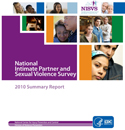Findings from the National Intimate Partner and Sexual Violence Survey: Implications for Prevention

In December 2010, the Centers for Disease Control and Prevention released the initial findings from the National Intimate Partner and Sexual Violence Survey (NISVS). This survey became the subject of hundreds of news stories about the prevalence of sexual violence, intimate partner violence and stalking. In this web conference, we will share results of the survey and explore the implications for prevention efforts.
Wednesday, Feb. 1, 2012 and repeated on Thursday, Feb. 2, 2012
This ninety-minute (90 min) session begins at 11 a.m. Pacific Time (2 PM Eastern, 1 PM Central, Noon Mountain, 10 AM Alaska, 8 AM Hawai’i).
Host/Presenter: David Lee, CALCASA, PreventConnect
Guest Speakers: Michele Lynberg Black, Ph.D., Division of Violence Prevention, CDC; Matt Breiding, Ph.D., Division of Violence Prevention, CDC; Kathleen Basile, Ph.D., Division of Violence Prevention, CDC
Materials:
- Slides [PDF]
- National Intimate Partner and Sexual Violence Survey (CDC NISVS)
- CDC Communications Toolkit [PDF]
- VAWnet NISVS Resource Page
- NSVRC xChange Forum
Recordings:
- February 1, 2012 [Click here]
- February 2, 2012 [Click here]

Please register me for the 11 am webnar on Wed. 2/1/12
Sign up by clicking on the register button above https://calcasa.ilinc.com/register/cjksjxx
[…] See PreventConnect on NISVS at: http://www.preventconnect.org/2012/01/web-conference-findings-nisvs/. […]
Is there a way to get an understanding about the percentages in their conclusions? The rates at which women are raped in the last 12 months is 1.1% but the rate at which men are raped in the last 12 months is inconclusive, but for some reason the survey made “forced to penetrate” an assault and not rape.
Given that that alone is at 1.1% in the last 12 months, would it not be correct to conclude that in the 12 months prior to the survey more men were raped than women, if you account for “forced to penetrate” as part of rape?
Let me just say that I do not think of it as a competition. It ultimately doesn’t matter, because all sexual violence needs to be addressed and stopped, but it does make for an astonishing and I think news worthy change in the dynamic.